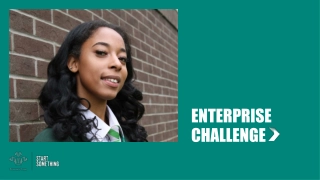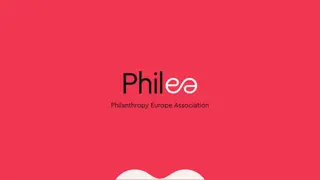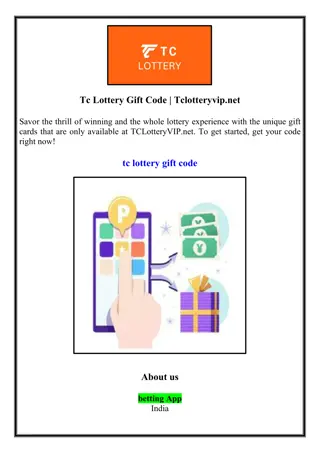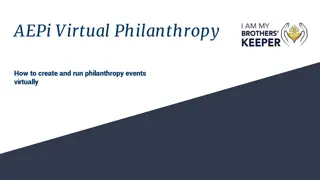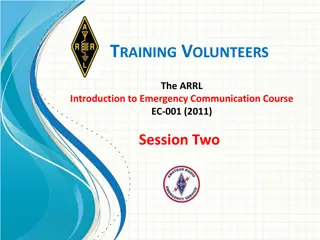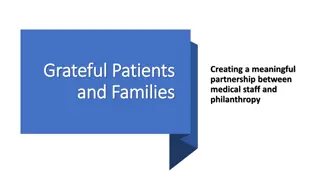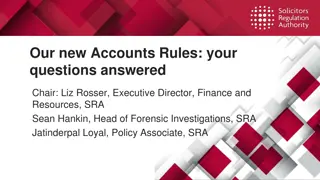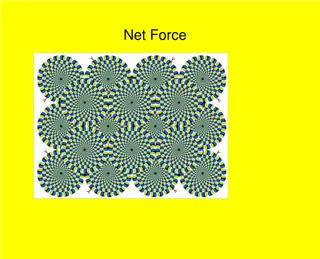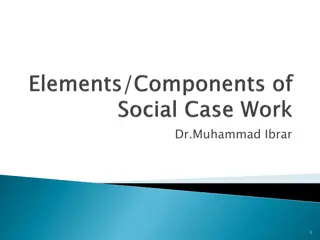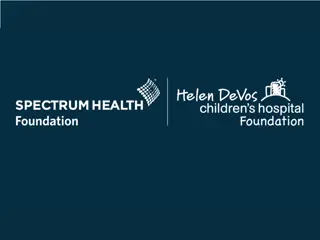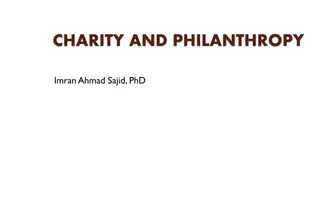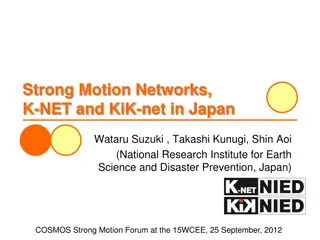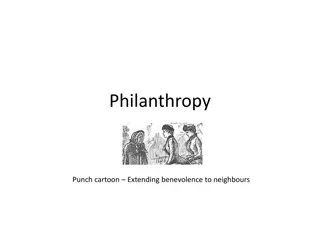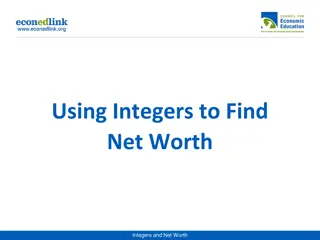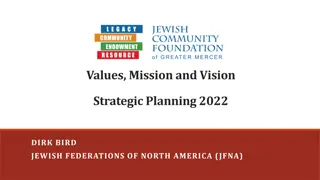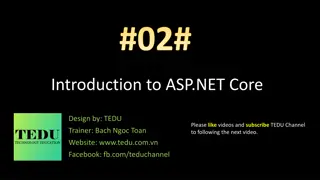Understanding High Net Worth Client Gift Planning and Philanthropy
Explore the role of trusted advisors in philanthropy, the disconnect between HNW clients and advisors, philanthropic motivations and assumptions, gift planning for the future, and how financial, social, and personal factors influence giving decisions. Gain insights into primary motivators such as doing good and passion for causes, secondary motivators like duty and responsibility, and tertiary motivators such as tax savings. Challenge poor assumptions around tax liabilities and social status to enhance charitable giving strategies.
Download Presentation

Please find below an Image/Link to download the presentation.
The content on the website is provided AS IS for your information and personal use only. It may not be sold, licensed, or shared on other websites without obtaining consent from the author. Download presentation by click this link. If you encounter any issues during the download, it is possible that the publisher has removed the file from their server.
E N D
Presentation Transcript
The HNW Client & Gift Planning THE ROLE OF TRUSTED ADVISORS IN PHILANTHROPY
A bit of perspective To give money away is an easy matter and in any man s power. But to decide to whom to give, and how large and when, and for what purpose and how, is neither in every man s power nor an easy matter. - ARISTOTLE
Advisor/Client Disconnect Recognize this If you want this Fully two-thirds of HNW clients who have discussed philanthropy with their advisors failed to receive advice about giving vehicles or assistance in setting one up Deeper relationships with existing clients Relationships with extended family members New relationships
I PHILANTHROPIC MOTIVATIONS AND ASSUMPTIONS
Top 3 Motivators: Doing Good Being passionate about a cause Having a strong desire to give back What really drives people to make gifts? Why aren t we on the same page? Having a positive impact on society and the world
Secondary Motivators: Responsibility and Duty Encourage giving by the next generation Religious or spiritual reasons What else do they think about? The obligation wealth brings
Tertiary Motivators: Financial Tax savings Directing tax dollars Diversification They can be important points but rarely drive the conversation Unfortunately these tend to be the things we think of first.
Poor Assumptions Reduction of tax liabilities Creating a family legacy Prestige/Influence Could this be closer to what you initially believed? Social status Research suggests a large disconnect between advisors and their HNW clients.
II GIFT PLANNING FOR THE FUTURE
What do you need to do differently? Learn how to develop a strategic giving plan Understand philanthropic instruments and their utilization Integrate philanthropic goals into overall financial plan Engage the next generation
Identify individual motivators Strategic Giving Plan Determine philanthropic intent- Gift during life Gift via estate Gift use- endowment, capital project, scholarship, naming rights, etc Helping a client integrate giving into their current financial/estate plan takes effort, but it can be worth it in the long run. Categorize asset types for lifetime gifts or estate gifts Identify possible instrument(s) SWOT analysis of plan
Outright gifts Cash, appreciated securities, personal property, real estate, artwork, closely held business interests, LLC membership, Gifts-in-Kind, Related-use , etc. Donor Advised Funds Popular gift instrument for its unique characteristics Gifts that pay income Charitable Gift Annuities, Charitable Remainder Trusts (CRAT, CRUT, NICRUT, NIMCRUT, Flip, etc.) Other types of Charitable Trusts Charitable Lead Trusts (grantor & non grantor, shark fin, etc.) Gifts that cost nothing during life Bequests, ILIT, Income for a beneficiary, Beneficiary designations, IRD items, QTIP, etc. Understand what s in your tool belt. The tools professional philanthropists use is extensive.
Implement their charitable mission Distribute assets to their various interests as efficiently as possible Income source options for retirement or survivors Investment performance of trust assets Tax implications for survivors and heirs So much more Integration Does your glossy financial and wealth management plan take into account their philanthropy? Really?
Can you help your clients educate heirs about the family s philanthropic priorities? G2 Are you willing to let them be involved? Have you met their executor(rix)? Isn t this beneficial to you as well? What does the next generation think about all of this? Are they as involved as they should be?
III REALITY CHECK
Misplaced Focus Tax benefits are not the primary driver of philanthropy Focusing on technical issues fails to uncover the real motivation for giving The next generation (your client s heirs) aren t being engaged adequately
Misplaced Fear Advisors fear engaging in this discussion out of fear they will lose assets under management Many options exist for retaining the assets- CRT s, CLT s, DAF s, and more can retain the advisor relationship Other strategies exist for leveraging assets for wealth replacement strategies
Ethical Issues for the Advisor Primacy of Philanthropy Respect Disclosure Conflict of Interest Confidentiality Reasonable Compensation


